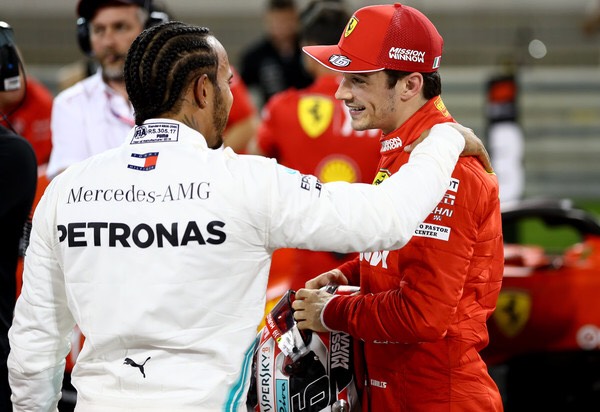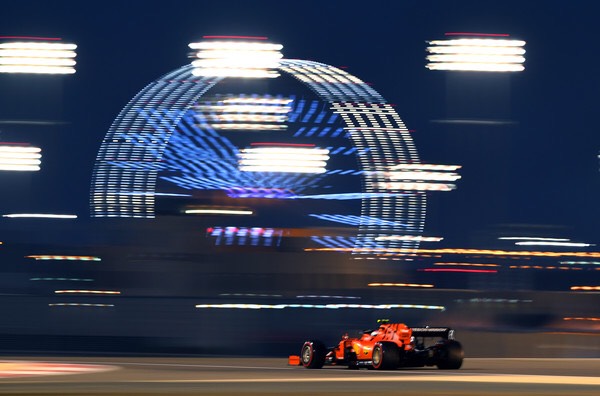“But it’s just cars going around in circles!”
If you’re a fan of any motorsport, you’ve no doubt heard this line before. Especially NASCAR fans. But there is more to it though; it’s about the atmosphere as the lights go out and everyone races for that first corner. It’s about the adrenaline and excitement of overtaking; the speed and precision of driving around a circuit ahead of everyone else. Speed, glamour, technology and excellence are the words which best describe Formula One racing; the queen of all motor sports, which celebrated its 1000th Grand Prix in China this year (2019). This brand is a powerful symbol. Despite progress of the world, it has long maintained a partnership between sport and technology.
Formula One is the pinnacle of motorsport. These machines are designed specifically to navigate circuits around the world, in the fastest time possible. These drivers are the best of the best. They race against one another at speeds of over 200 mph, to find out who the ultimate driver is. Of course, it’s not really that simple. F1 is not entirely balanced. Teams like Mercedes Benz and Ferrari have the resources to put together a package way beyond the other teams in the field. Luckily, the latest entry in the F1 game series from Codemasters isn’t quite as strict when it comes to these real world issues. You can choose to join any team in the championship and attempt to take them to the top of the table.
History of Formula One
When the first Formula One championship first took place in 1950 (O’Kane, 2011) no one could predict how much the sport would change over the years. Over the next three decades, Formula One racing grew from a gentleman’s race to a professional racing event. It rapidly evolved into the sporting spectacle we know today by the 1970s. Today, cars can reach 330 km/h. Which is why safety rules are so important in races. The first race on the Silverstone circuit in England took place without medical back-up or any form of safety net. The first safety rules were introduced in 1960 and safety belts were compulsory only from 1972. Even these couldn’t save 33 drivers from death on the track during Formula one weekends. Hence, they keep on improving them frequently.
However, safety rules did limit the number of fatal accidents. After Ayrton Senna’s spectacular accident in May 1994, the next fatality happened 20 year later (Jules Bianchi in October 2014 during the Japan Grand Prix). By 2018 all the cars had to have the “Halo” cover which will protect drivers head. This new form of protection despite providing protection for the drivers also disrupt field of view for some of them. The fans too complain that they cannot see drivers as well as before.
Evolution of the Drivers
Nowadays, the drivers are also different than in the past. The first grand F1 champion- Juan Manuel Fangio came to Europe when he was 38. At that time Formula One didn’t even exist. When he started racing in Formula One, he was the oldest driver in the most of the races. His admiring rivals called him the ‘Old Man’. This nickname fitted the aging genius who won his last driving title in 1957, when he was 46 (Formula 1, n.d.).
21st century champions usually started at a very young age. Four times champion Lewis Hamilton got his first kart at the age of 6 and started karting in races at the age of 8. The McLaren driver development program signed him in when he was 12 as everyone predicted that he would became a great Formula One champion in a very young age. The youngest driver ever to race in F1 – Max Verstappen did not even have a driving license while representing Toro Rosso Team during his first race during Australia Grand Prix in 2015 at the age of seventeen. In comparison, three times Formula One Campion (1969, 1971,1973)- Jackie Stewart bought himself his first car shortly before seventeenth birthday and debuted in Formula one at the age of 26.
Financing the Races
Even though both commercial and public sectors are important in sports, Formula One depends mostly on the first one. This is because this sport would not exist without the huge amounts of money. In 2016, Liberty media purchased the whole F1 brand for 3.3 billion pounds. Each of 10 teams has dozens of sponsors at the same time. They provides some of the car parts, software or even beverages. For example, Red Bull Racing’s partners are Red Bull, Rauch, Puma, Mobile 1, Tag Heuer, Ansys, Sabelt, Flir, PWR, Hexagone, Exxonmobil, Citrix, IBM, DMG Mori, Mitie, Hisense, Aston Martin, OZ Raicing, Simplivity, Earin, AT&T, Pirelli and Siemens. Brands have to pay a lot of money to get their logo on the car.
In 2013, F1 generated around 1.6 billion dollars in commercial revenues. Out of this, they distributed $700 million to the teams according to where the team finished in the championship. That year champion Red Bull Racing Team received around 100 million dollars. The most lucrative contract belongs to Fernando Alonso to whom McLaren pays 40 million dollars a year. Present world champion Lewis Hamilton gets paid 31 million dollars plus bonuses by Mercedes. The earnings depends strongly on wealth of the teams. That is why Pascal Werhlein in Sauber earns a “modest” 15000 dollars. The most popular drivers may additionally count on sponsorship contracts. Lewis Hamilton, the most marketable sportsman in the world in 2014, has signed contracts with IWC, Monster Energy, L’Oreal, Bose, Puma, MV Agusta Motorcycles and Bombardier Recreational Products.

Impact on the Host-Nation
Most hosting countries have to pay race hosting-fees. The money to cover that expense may come from sponsors but in some cases, the government has to bear the cost. Those emerging countries want to benefit from the 425 million viewers Formula 1 to improve their international image and get other benefits like a rise in the number of tourists. The contract signed with FOG (Formula One Group) is not cheap as it often runs for ten years and include an escalator clause. The average investment by a new Formula One Grand Prix could add up to 6-700 million dollars. Bahrain authorities in 2010 invested heavily to settle the event in F1’s calendar. This country had to pay 24.6 million dollars to host the race in 2010, raised by 50 per cent the following year.
Sometimes, the government pays the race-hosting fees; like in Australia. This country pays 30 million Australian dollars to host the race. Those funds come from public money. Public funding for sport event is often heavily scrutinized and criticized. This is because opponents say that public funds should be used for social causes which are assumed to have a wider influence on the society. The event relies heavily on attracting tourist to ensure that it provides a return for the state government. In 2004 the F1 agreed to be held in Shanghai. The Chinese government invested 450 million dollars in building the Shanghai International Circuit.
Issues in Formula One
Formula One like the other sports faces some issues. Many old-school fans believes that the sport is losing its soul while expanding from the traditional European circuits, whereas others believe that the investment in areas such as Asia is a necessary step in modernizing the world of motorsport. At the same time Formula 1 cannot rest on the laurels of previous success; it has to seek new opportunities, new audiences and new homes. Globalization may be a problem for the circuits which cannot compete on the financial level with richer countries.
Countries who would like to host Formula One weekend have to pay race-hosting fee to FOG. These fees which according to formula1.com accounts for one-third of F1’s total turnover, and varies from nothing for Monaco Grand Prix to 65-67 million dollars for Malaysia and Abu Dhabi. Prior to inclusion of the Bahrain race, Formula 1’s commercial power holders experienced an economic downturn in 2007-8.
The key effort From the Formula One Group to flip this was to seek new markets in emerging countries and increase race-hosting fees from existing ones. In 2005 Silverstone circuit was nearly not featured in the Formula One calendar as it couldn’t pay the 10 million dollar hosting-fee. Formula One with its unstoppable hunger for greater earnings had to decided whether to stay on the “classic” tracks like Monaco, Monza or Silverstone or move more towards the tracks in countries like Singapore or Bahrain which have no foundation in sport’s heritage. Moving races to the other continents bring new audience to the sport each year.
Media Influence
Starting in 2019 for six seasons Formula 1 will be broadcasted entirely on Sky Sports leading to some concerns regarding the restrictions being placed on the sport’s traditional reach. In general the sport is claimed to be watched by 400 million viewers in 2016, down from a peak of 600 million in 2008. But perhaps the biggest challenge of all is to bring in a new generation of enthusiasts.
Indeed, it seems an obvious move to make if the company wants to build deeper bonds between the drivers and fans, and promote the personalities behind the helmets. Drivers prefer to have contact with their fans through social media. Lewis Hamilton admits that interviews became boring for him. He prefers to communicate directly with fans via Instagram and Snap-chat. Formula One like in the past has temporary issues which it tries to solve to come back to its best days.
References :-
- BBC (2017) What might F1’s new owners do to rev up the sport? [online] available from http://www.bbc.co.uk/news/business-39371460; [11 December 2017]
- Formula 1 (n.d.) 65 years of F1 [online] available from https://www.formula1.com/en/championship/inside-f1/the-F1-brand/65-years-of-f1-.html; [8 December]
Image Credits :-



